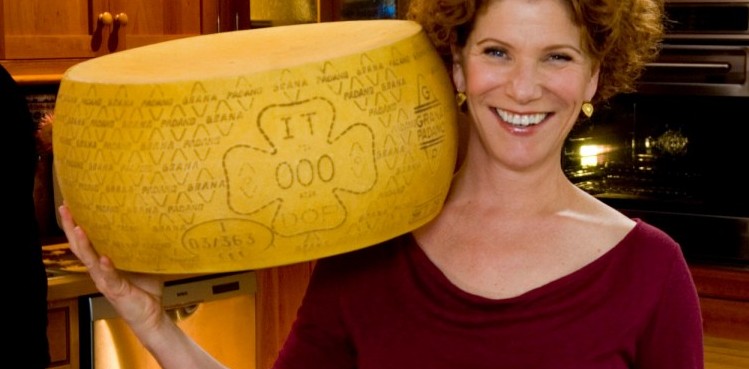
In this blog series, intern Julia explores the everyday language surrounding cheese, from etymology to idioms to associations. Learn why we “say cheese” when we take a photo, why once upon a time we believed that the moon was made of green cheese, or even the history of the word cheese itself. Last week we took a trip to the moon to search for cheese. Plus, be sure to answer the prompt at the end of the post each week for a chance to win a copy of culture’s ultimate cheese pairing guide: Cheese+ Congratulations to Susan, last week’s winner. Good luck to everyone this week!
“Big cheese” is one of those phrases I’ve never personally used (or even heard aloud) but it has still ingrained itself in my brain. It might have something to do with how regularly the terms pops up: on the signs of cheese shops and restaurants across the country; when my parents play Nirvana’s first album, Bleach (“Big Cheese” is a b-side); if I happen across Dexter’s Laboratory reruns on Cartoon Network (“The Big Cheese” came out in 1996).
As it turns out, the idea of “big cheese” has less to do with the dairy product than I initially thought – although, given the track record of other phrases and associations we’ve explored, I guess that shouldn’t be too much of a shock! I had secretly hoped the meaning of “big cheese” stemmed from rich folks of ages past who acquired the most desirable and expensive of cheese specimens, but the origins are in fact much more humble.
The prevailing opinion states that when the British were colonizing India, the settlers picked up the Indian word chiz, meaning “thing.” At this time in England “the real thing” was a popular phrase, and the settlers merged the two, creating “the real chiz.” When those who had been to India returned, spouting this new expression, the British likely changed the Indian term to a more familiar word: cheese. Alternately, Today I Found Out notes that the British in India may have heard chiz as cheese right from the start.
All of this should be taken with a grain of salt, however, because no one seems to have any concrete evidence. There is no doubt that “chiz” was a slang term for “the thing” – in 1886 the word appeared in Hobson-Jobson: A Glossary of Colloquial Anglo-Indian Words and Phrases, and of Kindred Terms, Etymological, Historical, Geographical and Discursive. According to the book, “chiz” described something authentic or top-notch. “The real thing” worked similarly, so while there it’s unclear how the two merged, it does seem very likely that “thing” became “chiz” and “chiz” became “cheese.”
Soon, the phrase hopped the pond to America. In the States “the real cheese” became big, negative, and associated specifically with people. While some believe the changes were because of the “Mammoth Cheese” made for President Jefferson in 1802, giant cheeses were popular in general in the late nineteenth and early twentieth centuries. These were created for publicity and self-promotion: A giant wheel of cheese would be displayed in public, to be cut up and distributed by a celebrity or politician during a large community event. Even Canada got involved. In 1893, a six-foot tall, 22,000 pound wheel was produced in Perth, Ontario. The massive cheese was transported by train to the Chicago World’s Fair. In these cases, these “big cheeses” would certainly have a negative association for at least part of the crowd.

Photo from all-about-perth.com
Thankfully, America has given up on making giant cheeses, but the legacy lives on both in English vernacular and pop culture. Even the politicians are holding on – in January, President Obama held a “Big Block of Cheese Day,” where his staff answered questions from the American public through social media.
Truly enormous cheeses are hard to come by. But if you had a giant wheel of cheese akin to Jefferson’s or Canada’s “mammoths,” what would you do with it? Share it? Keep it all to yourself? Carve it into a sculpture? Answer in the comments section by May 20, 2014 at 12:00 midnight EDT for a chance to win a copy of our upcoming special issue, Cheese+. The winner will be emailed and announced in next week’s post!
Photo Credit: Featured image © Tim Bellen




A wine & chiz party might be in order